Abolition of Slavery by Country
Slavery is the condition of being an enslaved person, prohibited from quitting their service for an enslaver, and looked upon by the enslaver as their property. Slavery commonly involves the enslaved individual being made to execute a job while also having their place of residence prescribed by the enslaver.
The abolition of slavery happened at different times in different nations. It often occurred consecutively over one stage–for instance, as the abolition of the trade of enslaved people in a specific country and then as the abolition of slavery throughout empires. Each step was usually the result of a separate law or action. The world map below displays abolition laws or acts. The map also encompasses the abolition of serfdom.
In Russia, for example, serfs existed as untaxed property until 1723. But serfdom in Russia existed until 1861. Serfs couldn’t be sold like slaves but were attached to their work land. When the land was sold, the serfs went with it. Russian serfs couldn’t leave the land without approval. They had little legal recourse and were often treated firmly.
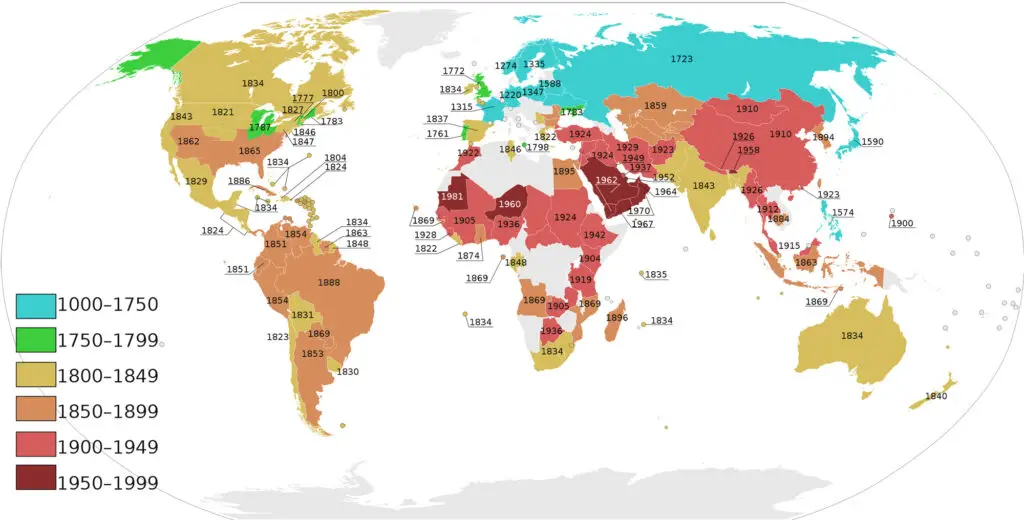
In many European countries, slavery was abolished relatively early. Nevertheless, many European countries continued participating in the transatlantic slave trade into the 19th century.
The transatlantic slave trade shipped about 13 million Africans across the Atlantic over 400 years. The leading transatlantic slave-trading nations, ranked by trade volume, were the Portuguese, the British, the Spanish, the French, the Dutch, and the Danish.
In 1803, Denmark-Norway became the first nation in Europe to ban the African slave trade.
Haiti formally proclaimed autonomy from France in 1804 and became the first sovereign nation in the Western Hemisphere to unconditionally abolish slavery in the modern era.
The northern states in the United States all abolished slavery by 1804. The U.K. (including Ireland) and the U.S. outlawed the international slave trade in 1807. British Empire abolished slavery in most British colonies by the Slavery Abolition Act of 1833 (with the notable exception of India), freeing over 800 thousand enslaved Africans in the Caribbean and South Africa and a small number in Canada. Although the British Empire banned slavery in the early 19th century, South Asians replaced Africans previously brought as enslaved people. They were “hired” through fraud, shipped to remote parts of the empire, and treated just as severely as enslaved people for miserable wages. This was quite typical in the latter half of the 19th century and, to the modern day, accounts for large Hindu populations in countries far from India, like Fiji and Guyana.
The colonies of France re-abolished it in 1848, and the United States abolished slavery after the Civil War’s end in 1865 with the 13th Amendment to the U.S. Constitution (involuntary servitude in the U.S. remained until it was banned nationwide in 1966). In 1888, Brazil became the last nations in the Americas to abolish slavery.
Mauritania was the last nation to abolish slavery, with a presidential act in 1981.
Nowadays, child and adult slavery and forced labour are illegal in almost all nations, as well as being against international law, but human trafficking for labour and for sexual bondage continues to affect tens of millions of adults and children. According to Wikipedia, in 2019, almost 40 million people, 26% of them were children, were enslaved worldwide despite being illegitimate. There also takes place voluntary slavery, entered by the enslaved to pay off a debt or get money.


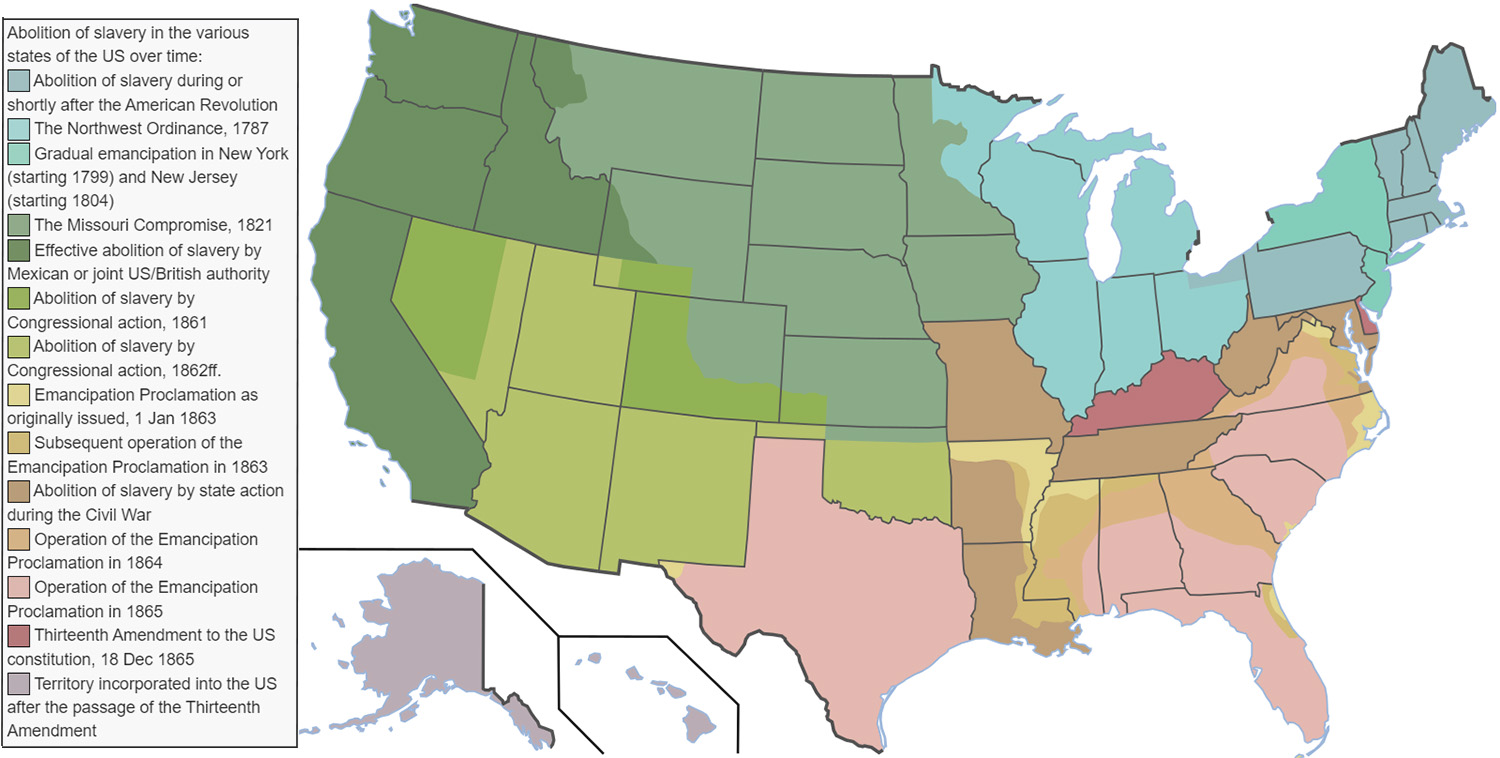


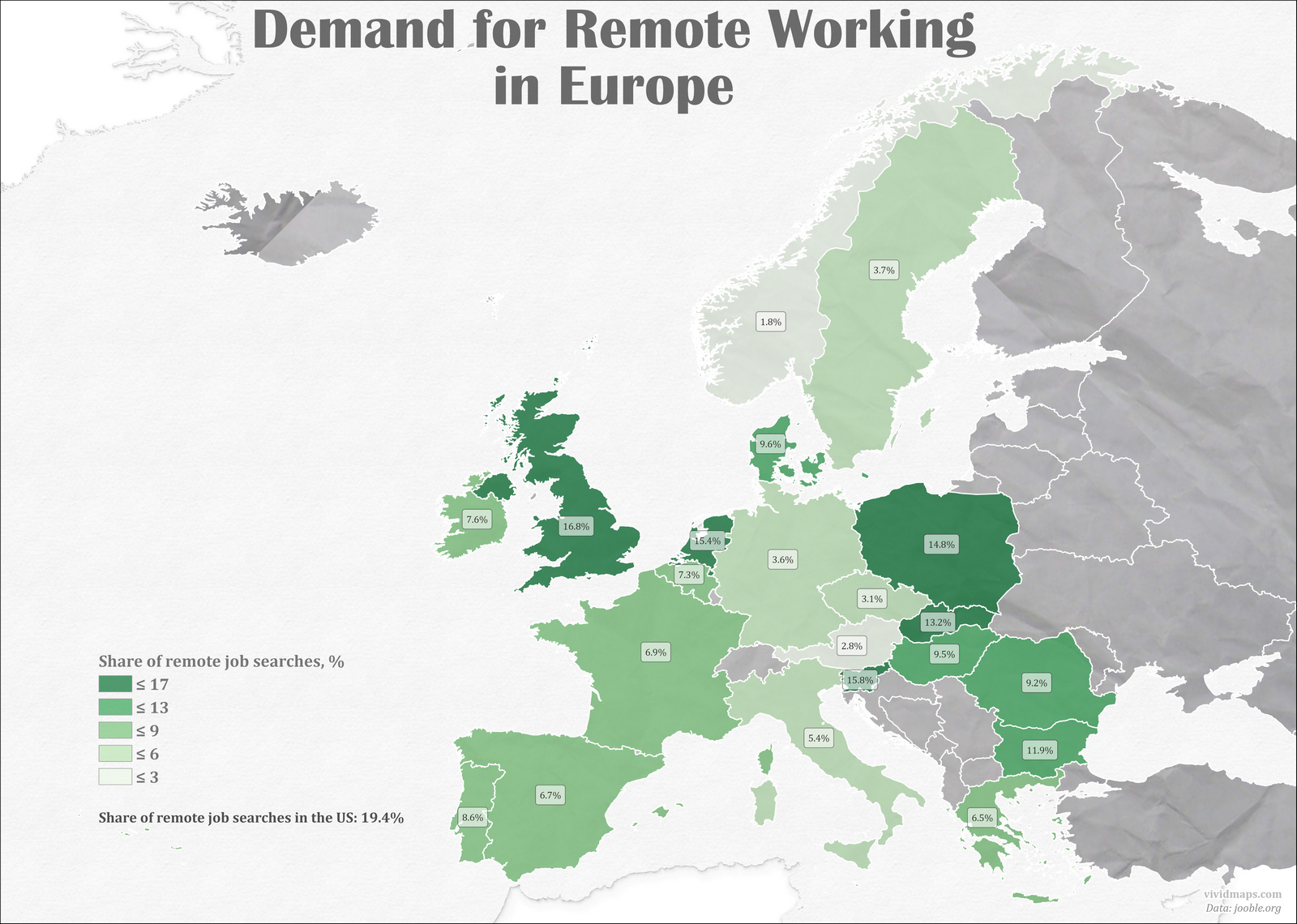
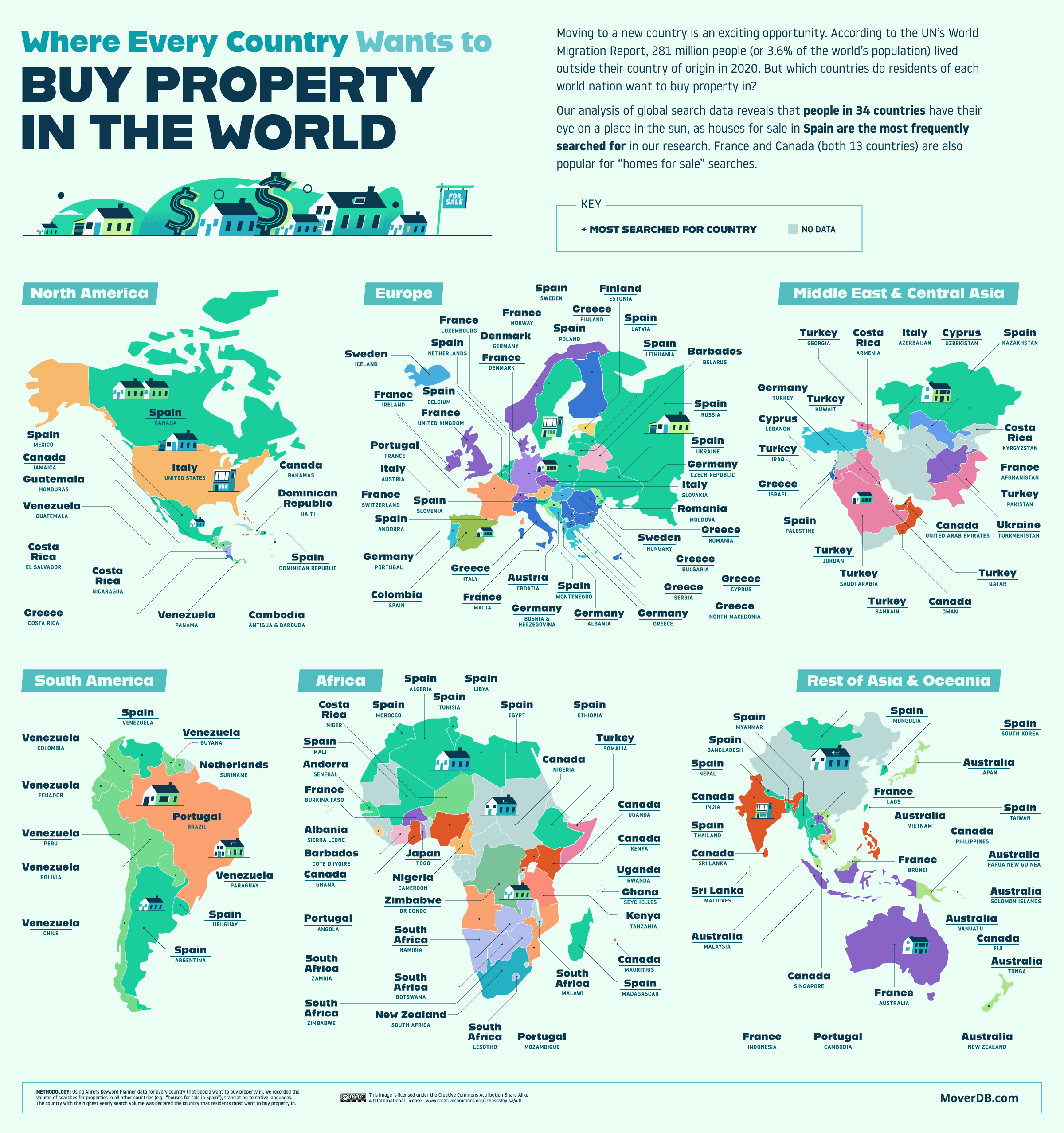
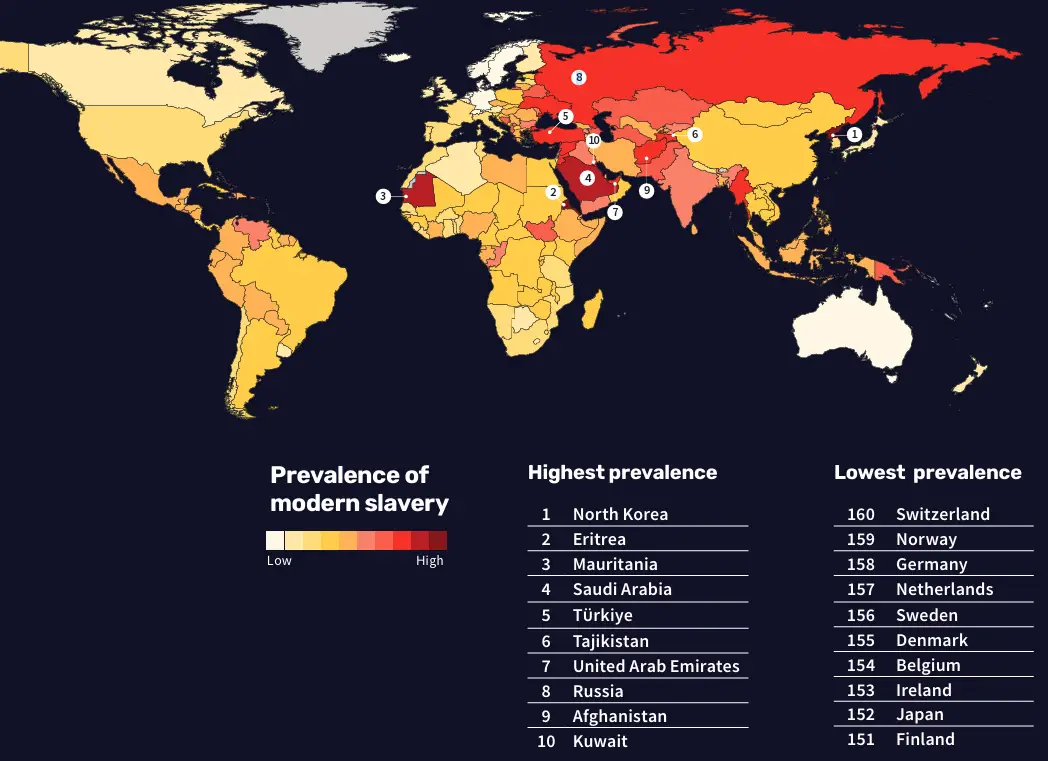
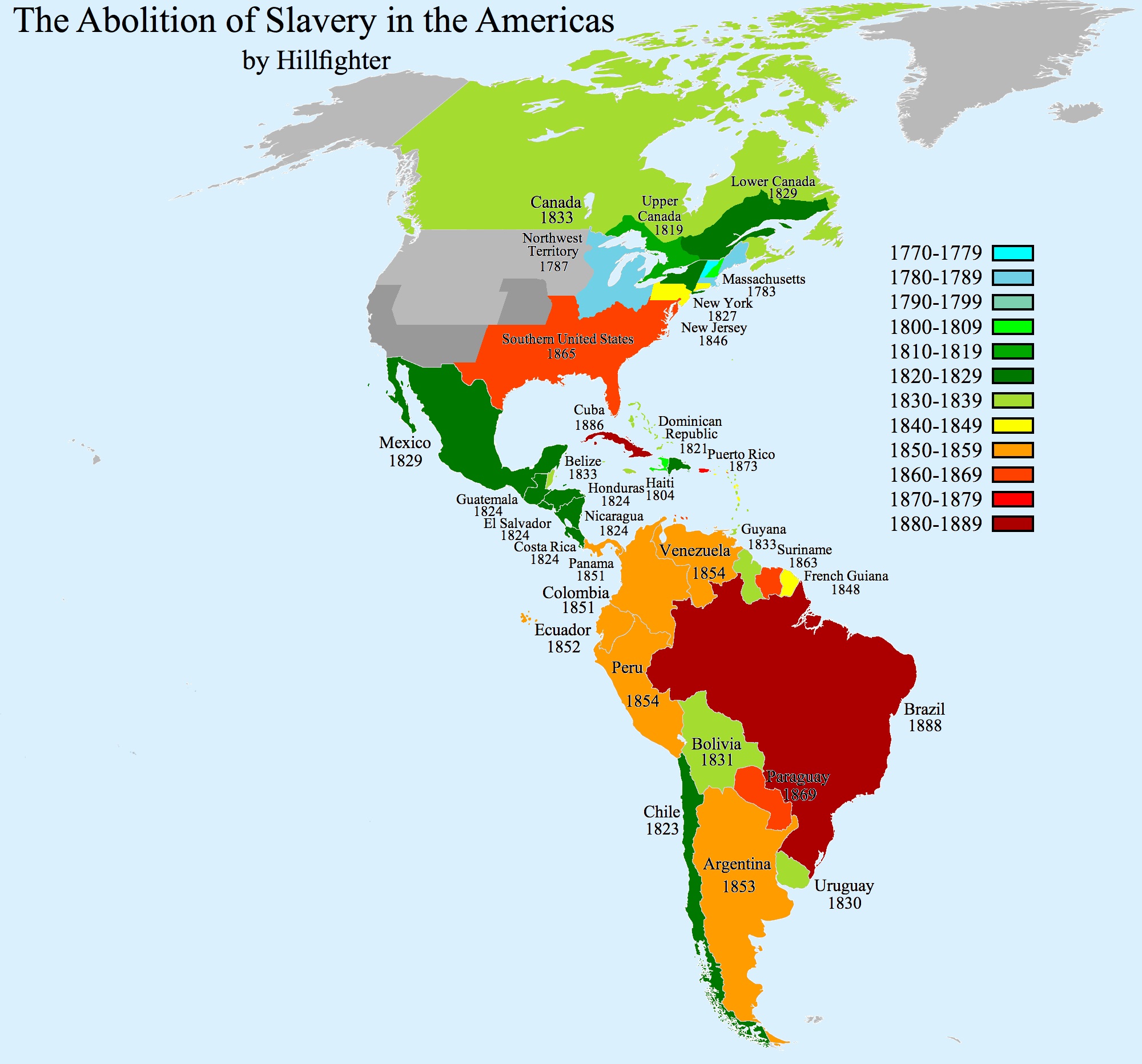
what are the grey areas?
Hey, I asked this yesterday… did my comment get deleted? I was asking what the grey areas represent. Antarctica & Greenland makes sense, but why the big area in Africa wereas only Inuits in those days… but the big grey area in Southern Europe & North Africa… ?
I’m assuming places that never had slavery, but I couldn’t tell you.
Some areas lke Antarctica and Greenland may have never had slavery but I suspect most of the grey areas are simply “unknown date” Saharan countries like Zaire/Congo, Burundi, Libya and Algera may still have slaveryor have never legislatively dealt with the issue.Also the fact that a country may have banned slavery does not necessarily mean that crime of slavery is enforced.
that would make sense but could it mean that there is still slavery existent in those countries
Many mistakes. In Spain not even serfdom was allowed since medieval times. Slavery was abolished in 1837 (it’s transatlantic slavery, not actual slavery. That was banned even since 1512 with the Laws of Burgos who banned slavery of natives and spanish subjects in the americas and the mainland).
when did Sir Stamford Raffles abolish slavery in Singapore and was this just a bann within the country to own slaves or was it a Law that no-one in Singapore could be made a slave? What is the timeline of his abolishment in connection to other countrries?